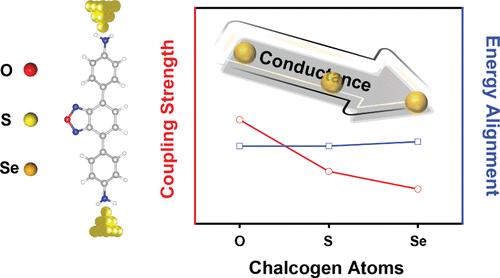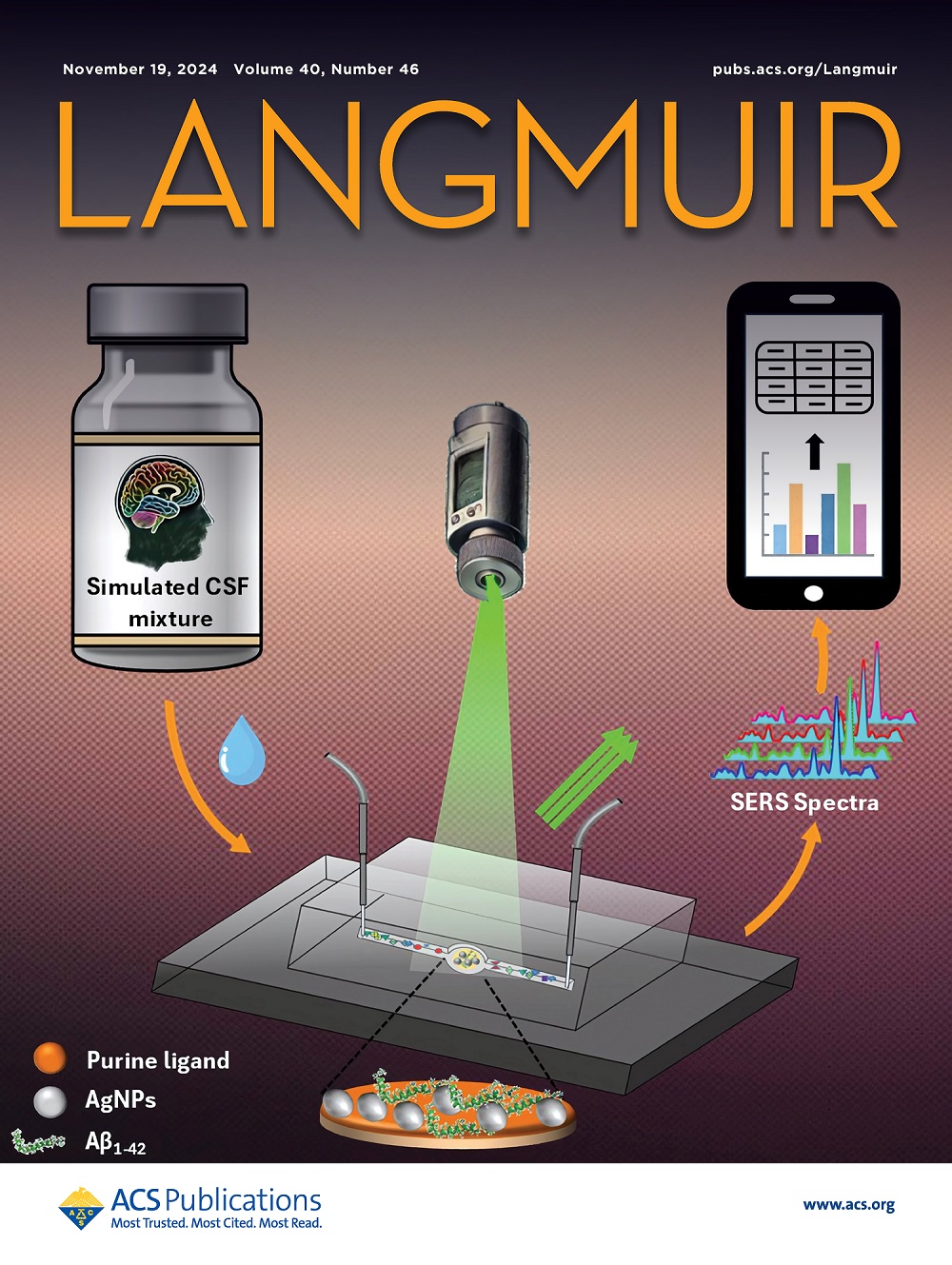Chalcogen Substitution-Modulated Molecule–Electrode Coupling in Single-Molecule Junctions
IF 3.9
2区 化学
Q2 CHEMISTRY, MULTIDISCIPLINARY
引用次数: 0
Abstract
Molecule–electrode interfaces play a pivotal role in defining the electron transport properties of molecular electronic devices. While extensive research has concentrated on optimizing molecule–electrode coupling (MEC) involving electrode materials and molecular anchoring groups, the role of the molecular backbone structure in modulating MEC is equally vital. Additionally, it is known that the incorporation of heteroatoms into the molecular backbone notably influences factors such as energy levels and conductive characteristics. In this work, we report a series of molecular wires that are organized in donor–acceptor–donor configurations, with distinct chalcogen substitutions, including oxygen (BOD), sulfur (BTD), and selenium (BSD). We investigated the electron transport properties using the scanning tunneling microscope break junction (STM-BJ) technique. Our results revealed that both the single-molecule conductance and the junction evolution feature are impacted by the heteroatoms in the benzo(chalcogen)diazole cores. Furthermore, current–voltage (I–V) experiments, combined with theoretical analyses, suggest that MEC plays a dominant role in modulating electron transport behaviors. Overall, our findings provide important insights into the interface-mediated charge transport exerted by chalcogen atoms within molecular devices, thereby enhancing the fundamental comprehension of these critical interactions.

单分子结中碳取代-调制分子-电极耦合
分子-电极界面在确定分子电子器件的电子传递特性方面起着关键作用。虽然广泛的研究集中在优化涉及电极材料和分子锚定基团的分子-电极耦合(MEC),但分子骨干结构在调节MEC中的作用同样重要。此外,已知杂原子掺入分子骨架会显著影响诸如能级和导电特性等因素。在这项工作中,我们报道了一系列以供体-受体-供体构型组织的分子线,具有不同的硫取代,包括氧(BOD),硫(BTD)和硒(BSD)。利用扫描隧道显微镜断结(STM-BJ)技术研究了电子输运性质。结果表明,苯并(硫)二唑核中的杂原子对单分子电导和结演化特征都有影响。此外,电流-电压(I-V)实验结合理论分析表明,MEC在调制电子输运行为中起主导作用。总的来说,我们的研究结果为分子器件中由硫原子施加的界面介导的电荷传输提供了重要的见解,从而增强了对这些关键相互作用的基本理解。
本文章由计算机程序翻译,如有差异,请以英文原文为准。
求助全文
约1分钟内获得全文
求助全文
来源期刊

Langmuir
化学-材料科学:综合
CiteScore
6.50
自引率
10.30%
发文量
1464
审稿时长
2.1 months
期刊介绍:
Langmuir is an interdisciplinary journal publishing articles in the following subject categories:
Colloids: surfactants and self-assembly, dispersions, emulsions, foams
Interfaces: adsorption, reactions, films, forces
Biological Interfaces: biocolloids, biomolecular and biomimetic materials
Materials: nano- and mesostructured materials, polymers, gels, liquid crystals
Electrochemistry: interfacial charge transfer, charge transport, electrocatalysis, electrokinetic phenomena, bioelectrochemistry
Devices and Applications: sensors, fluidics, patterning, catalysis, photonic crystals
However, when high-impact, original work is submitted that does not fit within the above categories, decisions to accept or decline such papers will be based on one criteria: What Would Irving Do?
Langmuir ranks #2 in citations out of 136 journals in the category of Physical Chemistry with 113,157 total citations. The journal received an Impact Factor of 4.384*.
This journal is also indexed in the categories of Materials Science (ranked #1) and Multidisciplinary Chemistry (ranked #5).
 求助内容:
求助内容: 应助结果提醒方式:
应助结果提醒方式:


